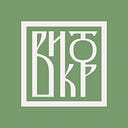Slavic Vyaz by V.A. Pushkarev
This article is introductory material for my book about Modern Slavic Vyaz.
The article covers only Russian Cyrillic. However, the book is not limited to the Russian Cyrillic alphabet; it includes Ukrainian, Bulgarian, Serbian, Macedonian, and Church Slavonic alphabets, as well as the Latin alphabet. With more than 170 pages, the guide is filled with examples of compositions, ligatures, and proverbs written in various languages. At the end of the guide, you will find calligraphy practices that can be printed at home to improve your calligraphy skills.
Acquiring the full version of the guide will be a great gift for personal development and expanding your creative potential.
Materials
If you are a beginner calligrapher, I recommend reading my previous articles. Nevertheless, I will remind you of what is necessary for writing:
Materials for writing:
1) Pen nib holders
1.1) Pen nibs. Preferred sizes 3mm, 2.5 mm and 1.5 mm (Brause, Leonardt “Round”, Tape brands);
1.2) Pilot Parallel Pen;
2) Flat brush (Pinax “Hi-Tech 224” synthetic brush #10 flat);
3) Talens liquid watercolor, gouache or ink;
4) Printing paper A4 or A3;
5) A4-sized checkered notebook
You do not have to buy all the tools (1–1.1–1.2), since these are alternative tools. For beginners, I would recommend starting with item 1.2 (Pilot Parallel Pen), then switching to classic instruments (item 1+1.1), and then to a wide brush (item 3).
Although most of the calligraphy examples in my book were written with a digital stylus (Apple Pencil), you can repeat them with real calligraphy tools. In this example, I am writing on a dotted paper with a regular Pilot Parallel Pen. It’s highly recommended to use thick high, quality paper (more than 80gsm ), otherwise, the ink will make blobs.
On the other side, for digital calligraphy on Ipad, you will only need:
1) A new generation Ipad or Ipad Pro, starting from the first (I, for example, still use Ipad 2017);
2) Apple Pencil;
3) Procreate app;
4) My brush for Procreate.
After importing the brush, it goes into the “Imported” folder. The most comfortable brush size for working is 10–20–30%. I often write letters with a semi-transparent brush; the brush’s opacity value is 59%. Streamline option should be kept around 30%.
Letter’s Construction
When you write these letters with real instrument, the main position of the writing tool is ~25°. During the movement of the stroke, the angle of the pen’s nib may increase to 30°. In this way, we achieve a slight entasis in the stem and other elements of the letter.
Letters have an average of 6 ducts, and during writing, their order can sometimes be changed for comfortable writing.
It is essential to pay attention to the construction of the stem and serifs. There is a classical approach to writing the main straight stroke, which is based on Roman capital letters. However, during my work process, I slightly inverted the strokes order, as I wrote letters with my left hand. The reason is simple — it’s easier for me to write with my left hand on an Ipad.
Calligraphy
Below are animated calligraphy examples. After repeating these letters a few times, you’ll get to know this style’s specifics, allowing you to write without looking at these spreadsheets. This topic is covered in detail in my workbook, as well as different alphabets, languages, ligatures, decorations, and much more.
I hope these animated examples may come in handy.
🔸You can buy my book here: (soon! 😊)
